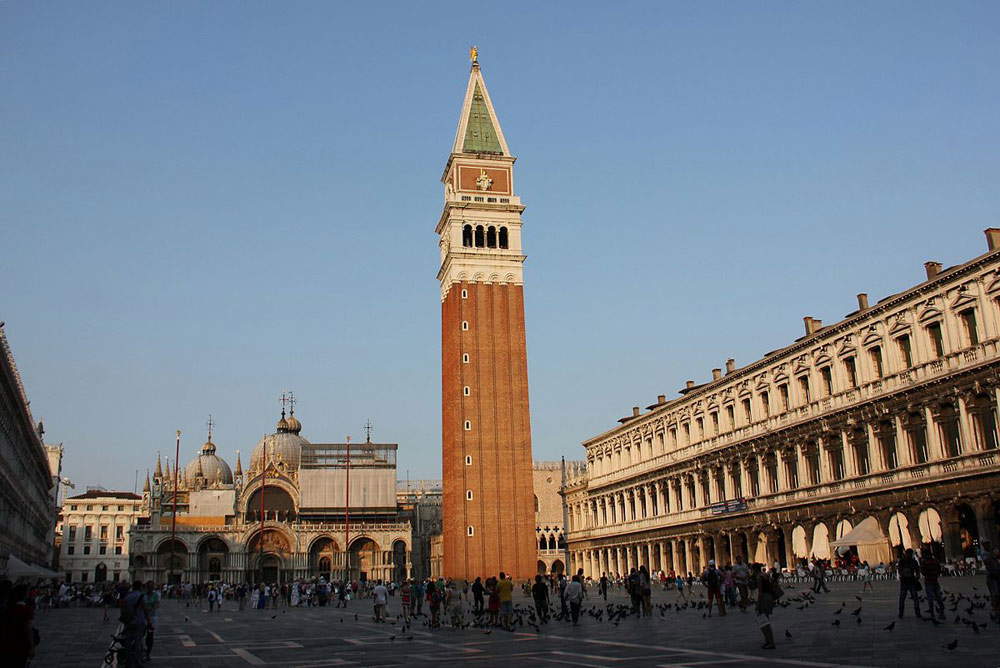In one of his most interesting speeches in recent days, the Minister of Cultural Heritage, Dario Franceschini, welcomed the idea of regulating access to Venice’s busiest places. A hypothesis that pleases the administration of the Venetian capital: the latter, through a councilor on Mayor Brugnaro’s list, made it known that, however, the first citizen remains "opposed to closed numbers but not to regulation mechanisms at peak times, as is the case in Dubrovnik, which has a traffic light along the main road that turns red when eight thousand people arrive and then you can no longer enter. We can call it a regulation mechanism, flow-controlled entry, or otherwise closed-number access, but the substance does not change: the goal is to prevent too many people from pouring into the focal points of Venice’s tourist life.
 |
| St. Mark’s Square in Venice. Photo credit |
The openness to closed numbers (pardon: to regulatory mechanisms) could only be the natural consequence of ministerial policies. The reform of the MiBACT and the subsequent measures undertaken by the last governments have mainly followed two directions: the concentration of funds and autonomy on a few entities located mostly in large cities, and the constant desire to focus on large numbers (we all have in mind the triumphalist tones with which the minister constantly announces the breaking of visitor records in museums, or the success of the nefarious “free Sundays”). Now this policy of systematically ignoring the widespread heritage is presenting the bill, and it is planned to repair the damage with a senseless and profoundly mistaken measure, which certainly cannot be decisive, let alone point the way forward for the proper enhancement of our cultural heritage.
Introducinglimited access to a site or monument is nothing more than a way to hide the root of the problem. In other words: there is no questioning of the reasons why tourist flows choose one place over another. We do not ask why there are some sites literally taken by storm, or whether certain initiatives do not exacerbate the situation rather than improve it. I am thinking of the aforementioned free Sundays, which often burden already delicate balances: even in Pompeii, on certain free Sundays, the logical nonsense of a closed number was introduced to regulate access. And the minister had even suggested to the superintendence to “favor short visits.”
Flow regulation mechanisms would then make our cities look more and more like playgrounds: the adoption of such a measure would certify a bombastic defeat, it would sanction the definitive transformation of monuments, squares and museums into ersatz amusement park attractions, it would be the icing on the cake of years of wrong choices in promotion, tourism, valorization. A few months ago it was proposed to introduce the closed number also to regulate access to the villages of the Cinque Terre: it goes without saying that such a measure is totally aberrant, because it would mean that we are no longer able to think of our cities as places that live a life of their own, but simply as attractors for tourists.
So what can be the way to solve the problems that mass tourism necessarily brings with it? It is a question of choices and opportunities: one possible alternative could be to bet on lesser-known heritage, on widespread heritage, trying to get the message across that in addition to the most popular sites there are many other realities that are no less worthy of being visited, known, appreciated. The idea should be to shift flows, rather than to regulate them: but if the second option represents the certainly easier and less demanding solution, the same cannot be said of the first. Because it would be necessary to rethink strategies, question years of promotional campaigns that have always focused on the usual places, involve a large number of players (companies and activities in the area, tour operators, museums, superintendencies, local authorities), and above all plan long-term actions: difficult at a time when politics proves to have less and less broad views and to work more and more on the short term. What is needed, in short, is a paradigm shift, to start thinking that results should not be those that are easy and immediate, but those that manifest themselves at a distance: they are also the results that guarantee greater stability. And never more than in these times do our cultural assets need stability, planning and serious targeted actions.
Warning: the translation into English of the original Italian article was created using automatic tools. We undertake to review all articles, but we do not guarantee the total absence of inaccuracies in the translation due to the program. You can find the original by clicking on the ITA button. If you find any mistake,please contact us.